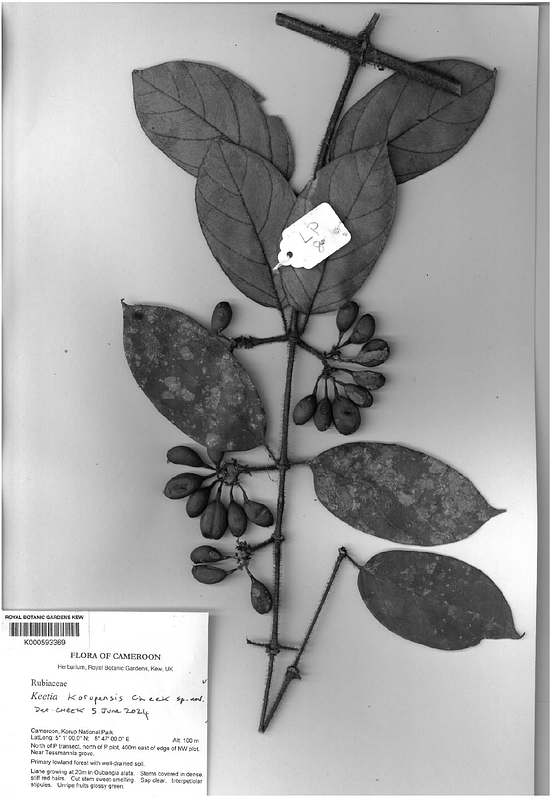Keetia korupensis sp. nov. (Rubiaceae - Vanguerieae) a threatened lowland evergreen forest climber and the endemic plant species of Korup National Park, SW Region, Cameroon

Keetia korupensis sp. nov. (Rubiaceae - Vanguerieae) a threatened lowland evergreen forest climber and the endemic plant species of Korup National Park, SW Region, Cameroon
Cheek, M.; Poundje, M.; Pearce, L.
AbstractSummary. A review of the strictly endemic plant species of the Korup National Park, S.W. Region, Cameroon, is presented together with consideration of the importance of Korup for global plant conservation. Eighteen strict endemic species are known, 14 of which occur in lowland evergreen forest habitat (including Keetia korupensis) and of which 3 are among the 29 grove-forming monodominant detarioid legume species for which Korup is world famous. Four Korup endemic species are rheophytes restricted to the Mana (Ndian) River rapids and falls which is probably the most species diverse site for shrubby rheophytes on the African continent. No endemics are yet known from Korup submontane forest, possibly because this is comparatively small in extent. Keetia korupensis Cheek, a rainforest climber, is described and illustrated as strictly endemic, on current evidence, to the Korup National Park. The species differs from all other known species of the genus in its stipitate 2-seeded fruits which are twice as long as broad (vs non-stipitate and subisodiametric in most of the species) and for the 2 mm long stiff, skin-penetrating stem indumentum (vs non-injuring or soft in other long hairy species). Keetia korupensis is provisionally assessed using the IUCN standard as Vulnerable (VU D2).